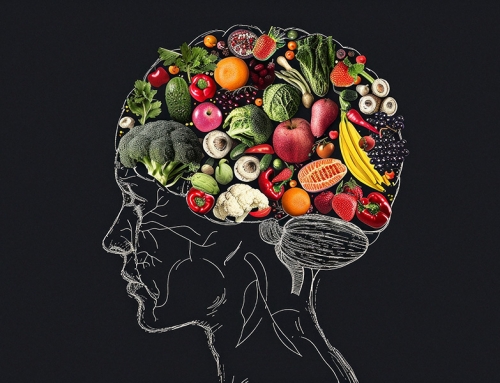Pharmacogenomics
Human genetics is a fast-expanding area of study. Pharmacogenomics is the study of the genetic components that affect how an individual will react to a certain substance. The phrase, which is a combination of the terms “pharmacology” and “genomics,” refers to the intersection of genetics and drugs. Pharmacogenomics aims to customize a patient’s therapy. Pharmacogenomics is making it possible to determine a person’s genetic makeup and use that knowledge to make educated treatment decisions, such as the likelihood that the therapy would be successful right away. (Canada, 2005)1.
Once medicine enters a patient’s body, the drug must travel to its target(s), act on its target(s), and then exit the body. Pharmacokinetic (PK) genes can influence a drug’s ability to be absorbed into and transported throughout the body, metabolised (either to an active form or broken down into an inactive form), and eliminated. The first and final of these processes are made easier by PK genes. Pharmacodynamic (PD) genes, which include the direct targets themselves, genes impacted downstream, and the genes in charge of the clinical result, are involved in how a medication acts on its targets. Both purposeful “on-target” effects that result in the desired therapeutic response and inadvertent “off-target” effects that result in undesirable outcomes can be attributed to the PK and PD genes (side effects or other unintended consequences of the drug). In order to optimise dosage and prevent negative drug responses, researchers are currently striving to tease out genes implicated in both the PK and PD pathways that impact drug activity. (Karczewski et al., 2012)2
Nutrigenomics
Nutrigenomics is the study of how genetic variations can affect an individual’s response to nutrients and dietary patterns. It involves the analysis of an individual’s genetic makeup to identify specific genetic variations that can impact the way that the body processes nutrients and interacts with dietary components. By understanding an individual’s genetic profile, personalized dietary recommendations can be made to optimize health outcomes and reduce the risk of chronic diseases. For example, a person with a genetic variation that affects their ability to process certain nutrients, such as folate or vitamin D, may require different dietary recommendations to achieve optimal health. Nutrigenomics is an emerging field of research that has the potential to revolutionize the way we think about nutrition and health. By using genetic information to tailor dietary recommendations, it may be possible to prevent or treat a range of chronic diseases, such as obesity, diabetes, and cardiovascular disease. A fundamentally new approach to nutrition research is brought about by nutrigenomics. For example, high-throughput technologies allow for the worldwide analysis of gene expression in a cell or organism (Neeha & Kinth, 2012)3
The following five concepts can be used to summarize the conceptual framework for this genomic research:
1) Typical dietary substances influence gene expression and/or structure by directly or indirectly affecting the human genome.
2) Diet can provide a significant risk for a number of diseases in some people and under specific situations.
3) The initiation, incidence, development, and/or severity of chronic illnesses are likely to be influenced by a few diet-regulated genes (and their typical, common variations).
4) A person’s genetic makeup may have an impact on how much nutrition affects the balance between healthy and ill states. Nutrition can be used to stop, treat, or alleviate chronic illness.
5) Dietary interventions (also known as “individualised nutrition”) based on an understanding of a person’s dietary needs, nutritional status, and genetics can be utilised to prevent, treat, or even cure chronic illness. (Farhaud et. al, 2010)6
Genomic technologies
Nutrition Informatics is a field that uses various technologies, including genomic technologies, to collect, analyze, and manage nutritional data. Genomic technologies play a crucial role in advancing our understanding of how genetics influences nutrient metabolism, dietary intake, and related health outcomes.
Genomic technologies refer to the various techniques and methods used to study and analyze an individual’s genetic information. These technologies have advanced significantly over the past few decades and are now widely used in various scientific fields, including medicine, agriculture, and ecology, among others. One of the most significant genomic technologies is DNA sequencing, which involves the determination of an individual’s entire DNA sequence. This process has become faster, more accurate, and less expensive with technological advancements. It has enabled researchers to identify and study variations in DNA that contribute to diseases, drug responses, and other important traits8.
Example of genomic technology in nutrition informatics is the use of DNA sequencing to study the human gut microbiome. The gut microbiome plays an essential role in nutrient metabolism and the immune system. Recent studies have identified specific microbial communities that are associated with various health outcomes. DNA sequencing has enabled researchers to identify these communities and understand how they interact with the host’s genetics and diet. Overall, genomic technologies are rapidly advancing our understanding of the relationship between genetics, nutrition, and health. They have tremendous potential to develop personalized nutrition plans and treatments and to improve our overall health and well-being.7
A genome-wide association study (or GWAS) may be used to investigate data at scale after it is amassed. These investigations search for gene variations linked to a certain characteristic. The “missing heritability” problem occurs when all the necessary genetic markers for a character cannot be found. Yet, as more genomic data is gathered, the capacity of GWAS to discover important gene variations increases, suggesting that the missing heritability issue may be resolved. Current uses of genomics include Genomic research has focused heavily on the genomics of health and disease, Direct-to-consumer testing, Forensics, Non-human genomics etc. (UK, 2022)4.
Challenges and limitations:
- Genetic information interpretation -It takes a lot of investigation and analysis to understand how genetic variations and pharmaceutical responses are related.
- Genetic testing costs – Genetic testing is still relatively expensive, which might limit access to specialised treatment. While a significant barrier to adoption at the moment, the cost of genetic testing is expected to decrease as the technology spreads.
- Outcomes following tests might vary -The results of genetic testing might vary depending on the lab and the test technique used. Clarification may be required by patients and healthcare providers, particularly if many laboratories continue to give results that are inconsistent and variable. Standardizing the methodology and interpretation of genetic testing will ensure accurate and repeatable findings. (Chaar, 2023)5.
References
- Canada, H. (2005, November 25). Pharmacogenomics. Www.canada.ca. //www.canada.ca/en/health-canada/services/science-research/emerging-technology/biotechnology/about-biotechnology/pharmacogenomics.html
- Karczewski, K. J., Daneshjou, R., & Altman, R. B. (2012). Chapter 7: Pharmacogenomics. PLoS Computational Biology, 8(12), e1002817. //doi.org/10.1371/journal.pcbi.1002817
- Neeha, V. S., & Kinth, P. (2012). Nutrigenomics research: a review. Journal of Food Science and Technology, 50(3), 415–428. //doi.org/10.1007/s13197-012-0775-z
- UK, G. (2022, January 26). Genomics Beyond Health – full report (accessible webpage). GOV.UK.//www.gov.uk/government/publications/genomics-beyond-health/genomics-beyond-health-full-report-accessible-webpage
- Chaar, M. (2023, April 4). The Future of Pharmacogenomics: What to Expect in the Next 10 Years. Healthnews. //www.google.com/url?q=//healthnews.com/family-health/drugs/the-future-of-pharmacogenomics-what-to-expect-in-the-next-10-years/&sa=D&source=editors&ust=1681164224307495&usg=AOvVaw2A26kOO8kZha_E8Zh686Gb
- Farhud D, Zarif Yeganeh M, Zarif Yeganeh M. Nutrigenomics and nutrigenetics. Iranian Journal of Public Health. 2010 ;39(4):1-14. PMID: 23113033; PMCID: PMC3481686. //europepmc.org/article/PMC/3481686
- De Filippis, F., Vitaglione, P., Cuomo, R., Berni Canani, R., & Ercolini, D. (2018). Dietary Interventions to Modulate the Gut Microbiome-How Far Away Are We From Precision Medicine. Inflammatory bowel diseases, 24(10), 2142–2154. //doi.org/10.1093/ibd/izy080
- Josephs, K. S., Berner, A., George, A., Scott, R. H., Health Education England’s Genomic Education Programme, Firth, H. V., & Tatton-Brown, K. (2019). Genomics: the power, potential and pitfalls of the new technologies and how they are transforming healthcare. Clinical medicine (London, England), 19(4), 269–272. //doi.org/10.7861/clinmedicine.19-4-269
Affiliation:
- Dean and Distinguished University Professor at School of Public Health, University of Memphis, TN, USA
- Foundation of Healthcare Technologies Society, New Delhi, India






Leave A Comment